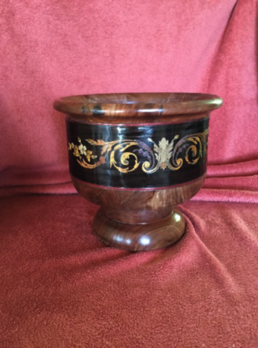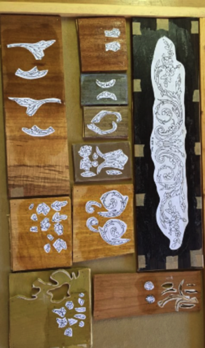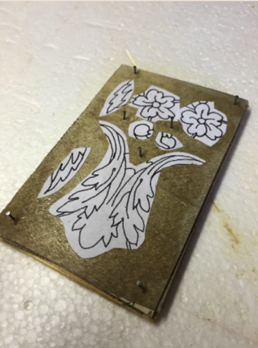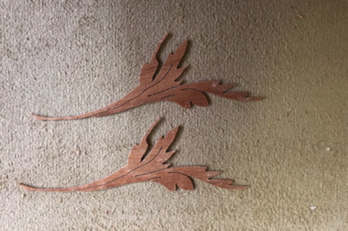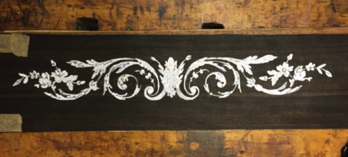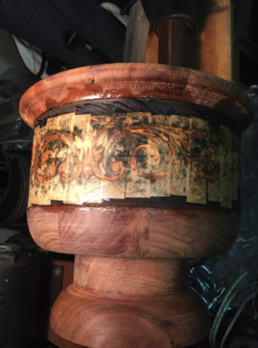Marquetry Walnut Bowl
The bowl measures about 10 inches diameter by 9 inches tall. It was turned by my father-in-law, Ron Campbell, from walnut that he acquired. in the 1070s. He had traded some Missouri rough walnut wood for a Doberman pup. After 5 years of drying he used the wood for kitchen cabinetry for his home. The remaining was used for him to make bowls. Ron’s trade is machinery and is very accomplished which helped him in making the bowls. He has made some 20-30 of them out of various exotic woods—no two are alike. After turning the walnut bowl, he sent it to me to insert the marquetry design.
I found the marquetry design at the American School of French Marquetry here in San Diego some years ago. It was just a strip of marquetry in a drawer glued to kraft paper and measured about 4 x 16 inches. I photographed and copied the veneered piece, selected similar veneers and made separate packets for “piece by piece” cutting method to make four copies. A better method would have been “painting in wood”. Using the chevalet de marqueterie, I made four copies at one cutting. This was assembled and glued face down on kraft paper. When Ron finished and sent me the walnut bowl, I attached the base to my lathe and supported it at its open end with a supporting block he provided. After measuring the width needed to support the marquetry and small amaranth fillets, the very shallow but wide groove was cut with the standard lathe tools. Now two copies will fit perfectly and joined end to end exactly. The amaranth fillet gave a pleasing separation between the ebony background of the marquetry and the walnut bowl.
Securing the marquetry to the bowl was accomplished using Old Brown Glue (hyde glue). To clamp the slightly hydrated veneer around the bowl supported in the lathe, I used wide strips of a bicycle tire inner tube. This allowed me to adjust it in place to fit as I wanted. The next day the second strip of veneer applied using the same method. A couple of days later the remaining narrow groove on top and bottom of the marquetry was cleaned out and a continuous strip of amaranth fillet was glued and inserted. The bowl and marquetry was sanded to 220 and then pumice used with a pad for additional preparation of the surfaces. The bowl was then finished using the classic french polish method. We are now trying to decide if we want to leave it gloss or tone it down to satin.
